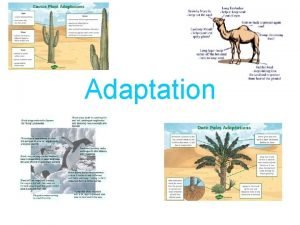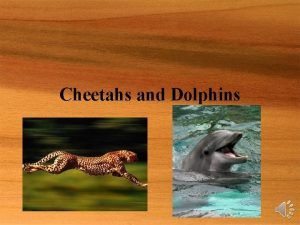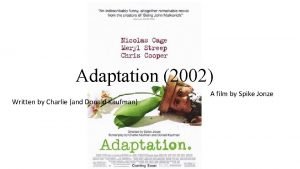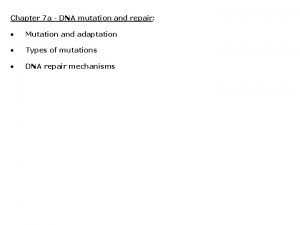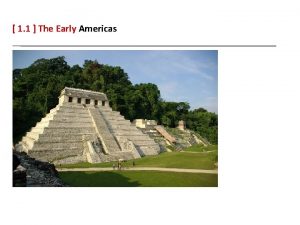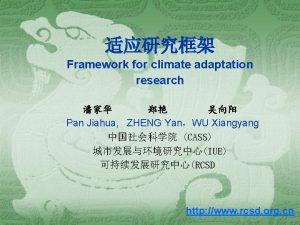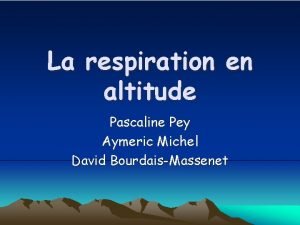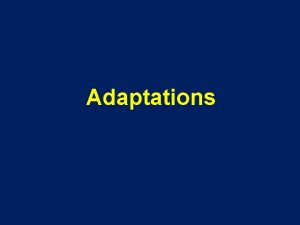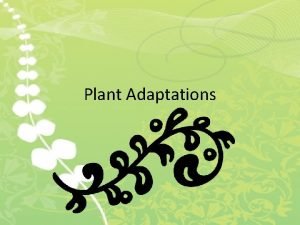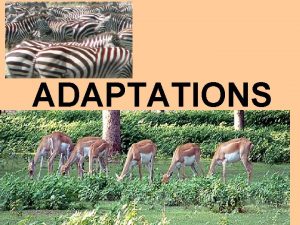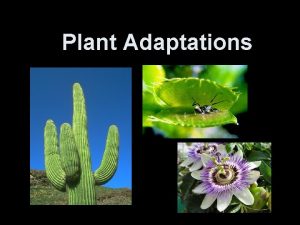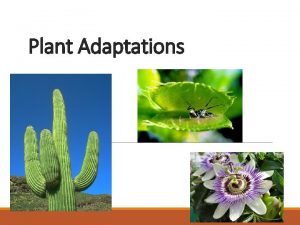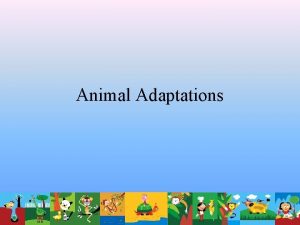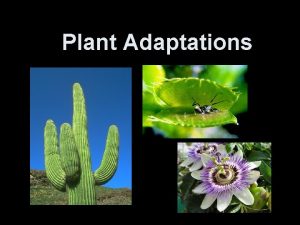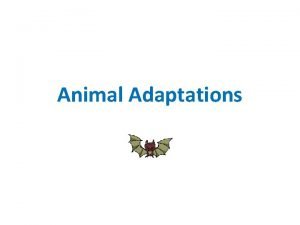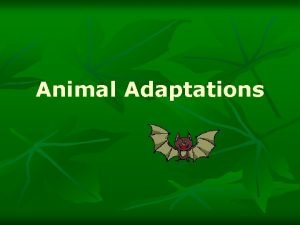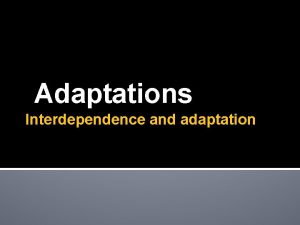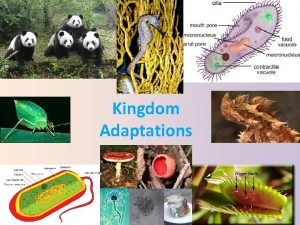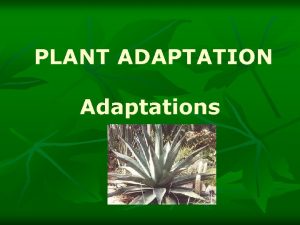Adaptations Adaptations An adaptation is a characteristic that


















- Slides: 18

Adaptations

Adaptations An adaptation is a characteristic that enables an organism to survive in an environment. Adaptations contribute to the fitness and survival of individuals

Adaptations result from natural selection - there is variation within a population - organisms with the characteristics that enable their survival will survive - those organims that survive, reproduce to pass on these characteristics. Remember Charles Darwin

Three types of adaptations • Structural – physical characteristics eg thick fur coats • Physiological –the processes occuring in an organism eg Hibernation • Behavioural – actions of an organism eg basking in sun

Frill necked lizards (Chlamydosaurus kingii) bask in the sun until they reach an adequate core body temp, then they will retreat into the shade.

The cladodes of the she-oak (casuarinas) have tiny little leaves that can only be seen with a lens. This reduces surface area for water retention.

The Australian alpine grasshopper (Koscioscula tristis) has a blue colouring at higher temperatures and an almost black colour at low temperatures.

The leaves of the Eucalypt hang vertically to reduce the area that is exposed to the sun in the hottest part of the day.

Penguins use countercurrent exchange to prevent heat loss. The warm blood in arteries heats the cool blood returning to the body.

Problems The environment is not static - an organisms current characteristic may have been inherited thousands of years ago when they existed in a different habitat.

Vestigal Organs Vestigal organs are the remnants of fully functional structures in their ancestors Dolphins and whales have lungs which are of no use for living in water

Therefore: • An adaptation refers to both the current state of being adapted and to the dynamic evolutionary process that leads to the adaptation

Looking at Fossils can tell us a lot about the history of life on earth

But interpreting the characteristics of fossils is even more difficult Are the bony plates of the stegosaurus for defence, temperature regulation or to attract a mate?

Many adaptations are not obvious


Missconceptions “An adaptation is a change in an organism that helps it survive and reproduce in its environment”

Misconception “An adaptation is a change in an organism produced as a response to a change in the environment e. g phototropism”
 Adaptation of animals in desert
Adaptation of animals in desert Tôn thất thuyết là ai
Tôn thất thuyết là ai Ngoại tâm thu thất chùm đôi
Ngoại tâm thu thất chùm đôi Walmart thất bại ở nhật
Walmart thất bại ở nhật Gây tê cơ vuông thắt lưng
Gây tê cơ vuông thắt lưng Block xoang nhĩ
Block xoang nhĩ Tìm vết của mặt phẳng
Tìm vết của mặt phẳng Sau thất bại ở hồ điển triệt
Sau thất bại ở hồ điển triệt Thể thơ truyền thống
Thể thơ truyền thống Con hãy đưa tay khi thấy người vấp ngã
Con hãy đưa tay khi thấy người vấp ngã Thơ thất ngôn tứ tuyệt đường luật
Thơ thất ngôn tứ tuyệt đường luật Cheetahs physical adaptations
Cheetahs physical adaptations Adaptation (2002
Adaptation (2002 Rate adaptation
Rate adaptation Cara's kit adaptation notes
Cara's kit adaptation notes Types of substitution mutations
Types of substitution mutations Which represents an aztec adaptation to their environment?
Which represents an aztec adaptation to their environment? Site:slidetodoc.com
Site:slidetodoc.com Adaptation altitude
Adaptation altitude
